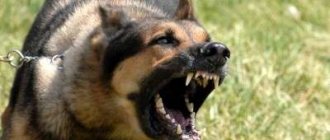Team benefits
To use the command correctly, it is important to know how it affects your pet. When your companion sits or lies down, his nervous system calms down. Excitation processes are inhibited. This can be useful, for example, during a severe panic attack or when weaning oneself from bad habits.
The command is also useful in everyday life. It is difficult to be on public transport without it. This skill helps develop self-control, which makes the companion generally behave calmer. Intrigued? Now let's talk about learning methods.
In everyday life
The skill of lying down on command will be useful for you and your pet on public transport, for example, on the train. In any situation where the dog must stop activity, this skill is appropriate: at an exhibition, hunting, examination by a veterinarian, etc. In addition, the “Lie Down” command is included in all disciplinary training courses and in almost all dog sports disciplines.
Laying the dog down helps to fix it in a calm position and, if necessary, leave the dog in this position for a certain time. This will make grooming, nail trimming, teeth brushing, combing and other hygiene procedures easier.
Standard
Performing at an exhibition or competition involves demonstrating commands, and if the plan is to win awards, then obedience is key. This team is included in all training course standards. The positioning is used to more confidently hold the dog when practicing discipline in the “Exposure” technique.
Team me
If you'd like to get started with your puppy, I'll give you some tips from my own experience. I'll tell you how we taught our dogs at an early age to command me
. At an early age, all you have to do is playfully, you don't have to shout or get a puppy, you have to arouse the dog's interest. Calling him by his name is all you need to get your puppy to come to you, but you want the dog to come to you on command. Start small.
Basic Rules
You need to train your dog consistently. It is important to accurately determine the technique that is suitable for a particular pet. It will be easier to teach the “Down” command if you follow certain rules.
- To begin, choose the quietest place possible. It is better to train an animal on the street rather than at home. Choose an area with clean soil, free of dirt.
- During training, you need to become an authority for the dog, not a tyrant. Do not use brute physical force, avoid cruelty.
- Make sure that the command is executed correctly and do not make concessions. Otherwise, it will be almost impossible to retrain over time.
- The voice command must be spoken before lowering the pet to the ground. The treat is given after the action is completed.
- If the dog gets up of its own accord, it is necessary to return it to a lying position and repeat the command.
- You should not immediately try to put your pet down for a long time. It makes no sense to require a lot of endurance at the very beginning.
- You shouldn’t force your dog to demonstrate the skill throughout the entire walk; everything should be done in moderation.
- You need to release the animal after completion with the command “Walk”, but not “Come to me”. The latter is classified as pleasant, which will reduce endurance when performing the skill of lying down.
- It is much easier to train a dog that already knows how to stand or sit.
- You should not pronounce the command in combination with others. Especially in the same sequence. Otherwise, the pet will perform the necessary actions only in conjunction.
Teach your puppy the command to lie down
Place the puppy near your left leg, hold a treat in your hand, let the dog sniff your fist, thereby showing the puppy's interest in treating. Next, the command is to lie down firmly and confidently and place your hand on the ground; as a rule, the dog will not lie down; if the command is completed, give a treat and praise with a voice, so you can rub it behind the ear. If the dog complies with the command and simply lowers its head, repeat the command and pull the leash down, but not too hard. But! With this command we should not praise the dog. It is better to try again without jerking the leash and if you do, praise the dog. I remember. Strictness is necessary in the process of raising a puppy.
To sum it up. A dog needs a leader, it’s like the animal world. Do not forget that severity and physical punishment are not the same thing. You can't hit a dog
! You can lose trust at an early age once and for all! Success in education.
What is needed for training
Before you start learning something new, you need to prepare everything you need. This is not difficult, since you will need the most common devices:
- Comfortable collar
. This is a mandatory item - it is used to control the pet. - Short leash
(2 m). It will be needed not only for classes, but also for moving to the training site. - Reward
. This is usually a treat. But do not take regular food - it will not interest the dog and will not become a motivator. Tasty pieces should not be too large, otherwise the dog will quickly get full and lose interest in activities. - Good mood
. A very important factor, since dogs sense the emotional mood of the owner very well. Only in a calm, friendly environment can a positive result be achieved.
If you're exercising outdoors, bring a couple of toys to keep your dog entertained after the workout.
How to teach your dog the command “Down!”
There are several options: food, mechanical and random. You will have to choose yourself, but it is recommended to start with the first one. Impact is used when other methods have proven ineffective.
Behavior selection method
Spitz training at home for beginners
This method works best if you have a lot of free time and little space to work with. All that needs to be done is to catch the moment when the pet makes the movement that is necessary, completely naturally. This is especially good for dogs who take the desired position very often.
When your pet lays down naturally on his own, you should immediately give him positive reinforcement through praise and then immediately throw in a small treat.
After about three or four times after suddenly rewarding the dog for lying down, it will be noticeable that he begins to understand why he is being rewarded and given a treat. He will begin to pay more attention to what he does that brings rewards. But at such moments the dog may become agitated and no longer respond to the desired command. In this case, you should be patient.
With hook
You can try to carry out training without treats - the method is suitable for obstinate or adult individuals. In this case, the trainer’s left hand is located on the dog’s withers, and the right hand picks up the pet under the front paws.
After giving the command, you need to gently press on the withers and with your right hand, slightly knocking (hook), move the front paws forward. When the dog takes a lying position, it should be praised and rewarded. After a five-second stay in a lying position, the dog is released with the command “Walk!”
It is important to immediately correct the dog's position when it follows the command. The body should be positioned in a straight line, without falling to the side. The front legs are extended forward, the hind legs are tucked in.
Food method
The most gentle method. The only possible option is if the “student” is too young. You should gently force your companion to lie down. What should I do?
1. Have your companion sit down. He must know the command “Sit!”
2. Show the treat. This could be a dry food pellet, but it is better to take something more valuable. For example, cheese or rye crackers.
3. Start slowly lowering the treat. Keep it close enough so that your pet doesn't have to stand up.
4. When your companion lies down, give the command “Down!” Reward with treats and pet.
Repeat until the pet understands what is required of him. Soon the dog will willingly obey.
Mechanical method
Used as a last resort. For example, when an animal does not obey or is indifferent to food.
1. Sit your pet down.
2. Gently grasp and lift your dog's elbows. Put your pet down. Try not to cause harm.
If you want to teach your dog commands: ditch the templates
There is a catchphrase: “there are no stupid dogs, there are only stupid owners.” This phrase should not be taken with hostility, because it is true. However, it is important to be able to read between the lines; we are not talking about the level of intelligence, but about the ability to find an approach to the dog.
Why is it believed that there are dogs that can be trained and dogs that cannot be trained? Because this is true! Specific breeds of dogs, especially service and aboriginal ones, are considered difficult to train. However, the essence of this statement is not that the dog cannot learn a command, but that it is quite difficult for the owner to prove his authority and force the pet to obey.
If you have no experience in keeping dogs, but you decide to get a puppy of a difficult breed and not train it, it is better to abandon this idea right away.
Dogs that are difficult to train do not obey an owner who is unable to establish the correct hierarchy. It is for this reason that the media is full of news about chow chow killers, that Central Asian shepherd dogs attack their owners, that pit bulls bite children, etc.
Each dog, depending on its origin and heredity, has specific skills. However, not every owner is able to come to terms with and cope with skills that cannot be eradicated.
If you are planning to get the first dog in your life, it is better to choose a pet with a pronounced companion nature. These dogs enjoy satisfying their owner's needs and are much easier to train.
Training a mongrel - myths and facts
There are two opposing myths, that training a mongrel is very difficult or, conversely, elementary. In fact, mongrel dogs, in terms of training, are not much different from their purebred counterparts. The success of training depends on the pet’s temperament, your patience and perseverance.
Mongrel dogs are equally well trained in basic commands, protective guard duty and tricks. The only difference between service dogs and wireless dogs is the training approach. Mongrels “in several generations” better understand people’s verbal communications, but not the words, but the tone of voice. You need to be stricter with service dogs, especially at the initial stage of training.
Any dog is trainable and can and wants to follow commands, but the success of training depends on motivation. Moreover, each dog is individual. If you choose the wrong motivation, you will not be able to properly train your pet.
Tips for training and learning commands
If you are not confident in your abilities and knowledge, it is better to attend several classes with a dog handler who will show you how to correctly teach how to perform a particular command. You can do it yourself only when you have a knowledge base, because wrong actions can harm the puppy.
During training, the dog should be given a good walk, this is necessary so that it is not distracted by smells and strangers. Dog trainers advise avoiding rude words and actions in general and when learning new commands. It must be remembered that the pet cannot carry out the order the first time; it takes time to understand and study.
The location where you conduct your classes is also important. If at the beginning you can teach him to obey the command to lie down in the house, then later, when going outside, you need to choose areas with dry soil or grass. In rainy and frosty weather you should not do this. Create different conditions when studying. This could be a run, during which the puppy needs to be stopped and given the command to lie down. It is also good to repeat exercises in crowded places for better socialization.
In addition to treats, you should definitely use regular praise. For a correctly completed task, you need to stroke it lightly. This method also has a good effect on the assimilation of knowledge, and also brings you closer to the animal. An important point is that during classes it is better to avoid playing with other animals; it is advisable that during classes you are alone with the animal. It will be useful to learn the voice command.
Additional training tips
- Do not forget that the command “Lie down” is given before coercion, and the treat is given only after the pet has laid down.
- If the dog gets up without your command, be sure to return it to the desired position, while repeating “Lie down!”
- Avoid excessive roughness when applying pressure.
- Do not try to immediately get great endurance from your dog.
- Do not place your puppy on dirty or wet ground during the early stages of training.
- Release the dog with the command “Walk”, not “Come to me” . The fact is that “Come to me” is a pleasant command (if you have trained the dog correctly), so it is much more difficult for a pet that is accustomed to being released with this command to wait. As a result, endurance becomes significantly worse.
Training a puppy
To exercise with a small dog, you need to choose a quiet, calm place where nothing will distract it. The training can be done like this:
- An animal that knows the “Sit” command must be seated in front of you.
- One hand should be placed on the pet’s withers, with the other you should take a treat and bring it to the pet’s nose, and then to the ground.
- The dog will instinctively reach for the food and lie down on the floor. In this case, you will need to give the command “Lie down” and hold the puppy by the withers for a few seconds so that he does not get up prematurely. The treat should be given to the dog immediately after the order is completed correctly.
If your pet doesn’t listen to you, you can train it using another method:
- The starting position for training is the same - the dog sits in front of the owner.
- A person approaches the pet from the side, puts his hand under his front paws, and places the other on the withers. He simultaneously presses the animal to the ground and stretches its limbs forward. Under such pressure the dog lies down on the ground. With this method of training, it is extremely important for the dog owner to control his own strength, otherwise he may injure the animal.
- As soon as the pet takes a lying position, he needs to be given the appropriate order. To reinforce this skill, the dog must be rewarded.
Command "Lie down"
This command is more difficult, so there is no point in starting it before 4 months. You also need to already know the “Sit” command.
They practice “Lie down” as follows:
- They call the puppy and command him to sit. After he sits down, he is shown a treat, bringing it close to the ground. With the other hand, take the collar and lightly press it to the ground. At this moment the command is “Lie down!”
- When the animal lies down to reach the treat, you need to praise it and give it the treat, but do not allow it to get up yet.
- If the baby tries to jump up immediately, they hold him down, repeating “Lie down,” but more strictly.
The “Down” command will require patience from both the dog and the owner. The fact is that young Germans are very restless, it is difficult for them to remain motionless for a long time. But you still need to achieve the command.
If the described method does not work, it makes sense to try another way: sit the dog in front of you and offer a treat at arm’s length, while simultaneously stepping towards it. This movement will cause the dog to back up and lie down. In this case, you need to use a leash to control that the German does not stand up immediately.
Coercion and encouragement
Practicing this command begins when the puppy is approximately 3.5-4 months old. It is not worth starting to teach this command earlier, since it falls into the category of those commands that are practiced in the so-called contrasting method, which implies the presence of the following elements:
- coercion to action;
- rewards for completed actions.
In this case, coercion will consist in the fact that when you give the command “lie down,” you will begin to press your hand on the dog’s withers. Encouragement may include:
- stroking;
- treats;
- praise.
Coercion does not mean that you should hit or scold the dog. No, everything should be served extremely softly
Of course, your dog would prefer a treat, but you can alternate the treat with tactile rewards or a kind word.
How much do you need to study
The first lessons should take no more than 10 minutes. It is better to devote 5 minutes to the command “Lie down” several times a day - this way you will achieve the best effect. Gradually you need to start holding the dog in a lying position: first for 5 seconds, by the end of training - up to 5 minutes. Everything is individual. Some animals, after a few days from the start of training, can withstand 1 minute in a lying position, some are not able to stay in place for 10 seconds. Take it slow, don't rush things.
Patience and systematicity are the most important thing
Don't demand quick results from yourself and your dog. Exercise little but often. Don't take long breaks. Raising a puppy takes time. There is no need to rush: the command “Lie down” is a kind of foundation that needs to be laid correctly. And if we are talking about an adult pet, be even more patient. After all, the ability to carry out the command “Give me your paw” does not mean obedience and learning ability.
The main mistakes that dog owners make during the training process
One of the main mistakes during training is excessive use of force and intimidation. Such methods, as a rule, do not lead to real results. Also, during training, you cannot “humanize” the dog. Unfortunately, dogs do not understand human speech and are not able to immediately understand what is wanted from them.
Not everyone takes into account the behavioral characteristics of a pet when training the necessary skills. As a result, an individual approach during training is ignored. And you can’t hold the lesson for too long. The dog may become bored (especially a puppy or teenager with a short attention span, such as terriers).
Note! You should not train in a bad mood. This is a recipe for disaster. Most likely, if the dog fails, the trainer will lash out in anger at the pet, which will lead to a bad result.
Let's sum it up
The “lie down” command, although it seems useless at first, will very soon demonstrate to you all the delights of the fact that the dog knows how to perform it, especially if you always take your dog everywhere and, for example, prefer to travel by public transport. Rest assured that your pet does not suffer from learning commands, but, on the contrary, is happy to learn them, since intellectual exercise develops dogs in almost the same way as humans, and gives them pleasure in the same way.
Sources
- https://dogworry.ru/dressirovka/kak-nauchit-sobaku-komande-lezhat.html
- https://dogkind.ru/dressirovka-sobak/kak-nauchit-sobaku-komande-lezhat/
- https://kinpet.ru/kak-nauchit-sobaku-komande-lezhat-/
- https://vplate.ru/sobaki/nauchit-lezhat/
- https://gafki.ru/sobaki/kak-nauchit-komande-lezhat.html
- https://RealPet.ru/vospitanie/komanda-lezhat-dlya-sobak.html
- https://dogtricks.ru/osnovnye-komandy/kak-nauchit-sobaku-komande-lezhat
- https://pets-expert.ru/kak-nauchit-sobaku-komande-lezhat/
- https://lifeo.ru/kak-nauchit-sobaku-komande-lezhat/
[collapse]
At what age should you start training?
You should not try to teach anything to a puppy before three months. It's dangerous and useless. Young pets cannot concentrate on something for long enough, and the process of training at an early age is traumatic.
Do not think that it is no longer possible to raise an adult four-legged friend. The training process will require much more time and effort, but training a dog is a necessity.
Do not forget that training is a way of establishing a hierarchy between the owner and the pet, and this, in turn, is a matter of safety.











